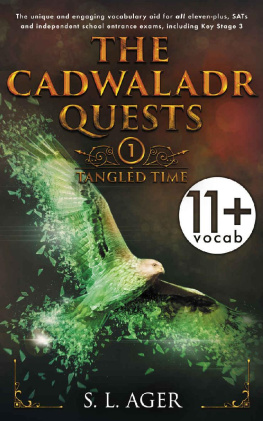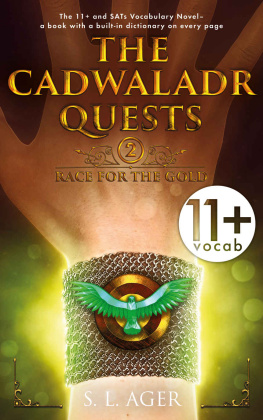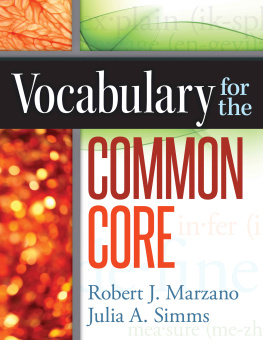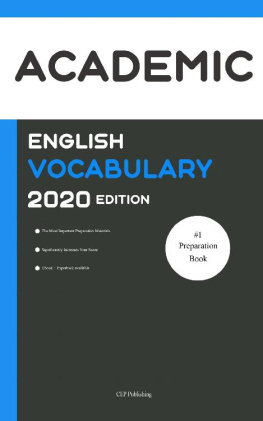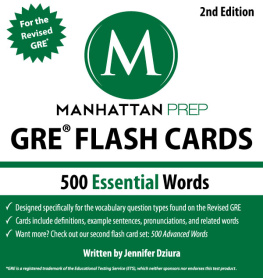The Cadwaladr Quests
Book 1: Tangled Time
S. L. Ager
Contents
Preface
I wrote this book whilst helping my children pass the eleven-plus exam. My aim was to try to make learning difficult vocabulary easier by including and defining it on the pages of an original and exciting book of fiction.
My daughter was an avid reader, so vocabulary came more naturally to her. My son was the opposite, a reluctant reader. For him, learning vocabulary was dull (especially if it was set within classical texts).
Many of the words included and defined in this book come from the practice materials we covered and amassed during the time working towards the eleven-plus exams and SATs in primary school, as well as Key Stage 3. We worked with both GL and CEM materials.
Of course, no published aids can guarantee that their material will appear on any exam paper, and neither can I. However, considering The Cadwaladr Quests: Tangled Time contains almost three thousand word definitions and hundreds of corresponding synonyms and antonyms (in a fun story for girls and boys), what does any parent or young reader have to lose?
My children have been my beta readers and a constant encouragement to finish the book. Without their approval, I wouldnt have published it.
A final note of endorsement for the concept also came from my sons friend on the way home from sitting a mock exam. He didnt know I was writing this book and said to his mum, Mum, why isnt there a book that I can read that includes lots of these words, rather than learning them from lists and exercises. Its so boring.
My son, who knew I was writing the book, smiled at me but said nothing.
His friends mum replied, Well, I cant write a book overnight, so well just have to continue as is.
That conversation gave me the final push to finish this book.
As a child, I had the privilege of living on the beautiful Isle of Anglesey, the setting for part of this book. The legend of Beddgelert, which also features, is a story I told my little brother when he could not sleep at night.
I hope you enjoy Claire and Bens gripping journey in the first book of The Cadwaladr Quests, but moreover, I hope it helps you and your children with any challenging vocabulary exams they are facing.
How to Use This Book
This story has been specially written to help young readers prepare for their eleven-plus, SATs and entrance exams, as well as Key Stage 3. It includes difficult vocabulary embedded in a fun narrative that provides context for the new words and makes them easier to learn and understand.
On every page, key words are in bold, and each has a correlating footnote with a concise definition. The words are defined using the context in which they appear in the text, and definitions are as child-friendly as possible. Chosen key words are defined only once, when they first appear in the story.
Synonyms and antonyms are also provided, and these can be directly swapped into the text to further build vocabulary, although some words do not have antonyms if they do not exist. The vocabulary becomes more complex as the story progresses.
This book does not aim to replace a dictionary or purport to be one, but dictionaries have been used to check the credibility of each definition.
How to Navigate this eBook
On every page, key words are in bold, and each has a correlating footnote with a concise definition.
To access the footnote, tap the small number that follows the key word, and a window containing the words definition will appear at the bottom of the screen.
To close the pop-up, either tap the number again, or tap the X symbol in the top right corner of the pop-up window.
If you would like to browse the key words associated with a chapter, click on the Go to Footnotes link at the bottom of any pop-up window: this will take you to the relevant part of the Notes section, located towards the end of the book. To return to your original location in the story, tap the same footnote number in the Notes section. To simply read all the collected footnotes from the book, please visit the Notes section from the Contents page.
Top Tips
- It is best to read this book for the first time with an adult.
- The definitions are included for convenience and to guide the learning, not as a definitive must learn list.
- Chosen key words are defined only once, when they first appear in the story.
- To make learning difficult words easier, try to associate the words with the relevant scene in the book and to picture their meanings.
- Chapter lengths vary, so do not necessarily aim to finish a chapter in each sitting.
- Some pages have more definitions than others to fit in with the storytelling.
- The definitions decrease in the final chapters, enabling the reader to enjoy the ending with minimal interruption to the story.
- Read the book as often as is needed, and continue to use its vast resource of definitions, synonyms and antonyms to reinforce learning.
- The best way to learn new words is to read as widely and with as much variety as possible. Every book is a world of adventure waiting for you to turn to the first page. I hope my book helps in this journey of discovery and learning.
Key to Abbreviations of Word Type
(v) verb
(n) noun
(adj) adjective
(adv) adverb
(prep) preposition
(con) conjunction
(int) interjection
(ant) antonym
Claire
Today, Claire Cadwallader suspectsread. Her sneaked snack will go uneaten. Shell fall asleep early, her book flopped on her chest, her lamp glowing. Shes neither tired nor ill. Today is an ordinary day. From tomorrow, Claire will never be the same again.
THURSDAY


1. A Normal Day
Oh no, not you! Claire stiffened, staring at the carpet.
Wallace! No! No! No! She thudded down onto bare.
She shuffled him, she tried and tried, but it was too late. Her old friend was beyond repair.
As Claire gazed down at his broken body, her earnest childhood memories unfolded before her. Was this repairable? How could she fix this accident? She held him in her hand.
I wonder if I could glue you, she said, holding Gromit in the other hand. Im such a clumsy klutz!
A regretful smile separated the three friends. She tried to push him back together, but on closer inspection, she feared poor Wallace may well have been silenced forever.
Claire Cadwallader lived in Chorlton, Manchester, England. She enjoyed simple things, like her now-decapitated Wallace and Gromit alarm clock.
She considered.
I will try to mend you. Dont you worry, Wallace, Claire said, forcing a cheery tone.
As if handling the crown jewels, she gathered up the broken pieces. Her dad had gifted the talking clock to her brother, Peter, on his fourth birthday. It belonged to her now, and she

